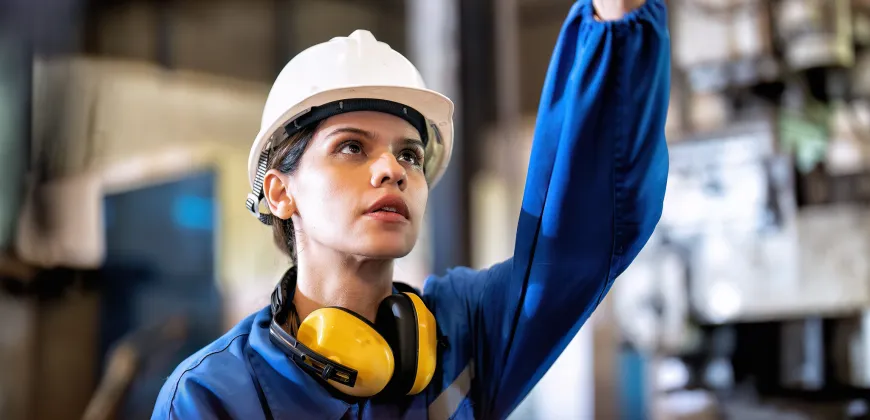In conversation with Geoffrey Cox
Geoffrey Cox is an architect at Local Practice Architecture and Design and is an adjunct professor at UBC, where he teaches a course on regenerative development for the Master of Energy Leadership in High Performance Buildings Program, and the School of Architecture and Landscape Architecture.

Tell us about your background.
I’ve always been interested in multiple perspectives and interdisciplinary thinking. My undergraduate degree is in integrated sciences and my master’s thesis for my degree in architecture focused on regenerative mutualism – exploring how we can work to enhance both human and ecological systems through co-creative processes.
In my current work at Local Practice, I advocate for integrated approaches to design as a way to help address local community and environmental challenges. As a firm, we work at many scales to align community interests towards shared outcomes that benefit both people and place. Historically, our work has included institutional, education, infrastructure and affordable housing typologies.
What is an integrated and regenerative approach to design?
Integrated design processes should seek to engage all rights holders and stakeholders at the beginning of project inception, ideally at an early planning or pre-design stage. The idea is to think broadly about all living systems within a place when you intend to change that place over time. Through this initial understanding we are better positioned to intentionally seek mutualistic outcomes between the human and ecological systems and increase the overall potential and vitality of this place before, during and after any type of intervention.
We have seen the ongoing degradation of our environmental systems, and there’s an argument to be made that we can trace that degradation back to how projects are planned and executed, in addition to policy and land ownership factors. When you approach a project with limited interests and values, the outcome can be devastating for the non-human part of the living system. Yet we all depend on the interconnected and interdependent living systems we are part of. Is it our intention to inhibit life through impatient and ill-conceived development of our built environment? Our actions tend to reflect our values and the way in which we see and relate to the world around us.
Initially change starts with self – the most power we each have is to initiate change within ourselves, our local environments, and the work we do each day.
We want the paradigm to shift towards a more eco-centric worldview where we think about a project’s physical place first and the systems that already exist in that place, which could include the hydrology, soil quality, air quality and all the species that live there.
That understanding should come before plans or decisions are made about how to intervene in that place.
Fundamentally, at a high level, we require consideration and dialogue towards integrated solutions that benefit humans as well as the non-human through models of developmental stewardship. When we intentionally co-create mutualistic strategies we work to improve a place over time for all forms of life within, for the betterment of all.
Tell us about course you teach on regenerative development.
I’ve taught a course on regenerative development for several years, and I’ll be co-teaching the course again in the fall of 2025 with Jason Heinrich, who is both a professional engineer and an architect. All students in the MEL in High Performance Buildings take this course, which is also open to students from UBC’s School of Architecture and School of Landscape Architecture.
Students learn how to apply a regenerative design lens to their practice. Working in small interdisciplinary groups, they are tasked to develop a project framework for a real-world project. This involves stepping back from design-based strategies to take a high-level view of intended outcomes.
Students work develop a project vision, goals and strategies, and metrics for discrete outcomes.
Project frameworks are a useful tool for supporting a more holistic approach and can support planning documents, RFPs and more. When they are developed before the design stage, anyone coming to the project can use them as a guiding framework for the deployment of actual project strategies. For example, if there’s a high-level objective to increase biodiversity and habitat, the fine-grained strategy could be to integrate a green roof or community garden.
In addition to this assignment, the course also includes case studies, tours of sites that have adopted regenerative design principles, external guest speakers and in-class sessions where students discuss and debate topics and learn how to apply an integrated design process to their assignments.
How do students benefit from the MEL in High Performance Buildings?
This program brings together students with backgrounds in engineering, architecture, landscape architecture, business, real estate and planning who learn first-hand the value of collaborating with professionals from other disciplines. Many of the students come to the program with global experiences and all students benefit by learning from their peers about successful approaches and processes in other contexts.
Students in this program gain a more holistic understanding of the evolution of sustainability thinking and the transition towards regeneration. In both the course I teach and the other courses in the program, there’s a strong focus on case studies and project-based assignments based on real-world examples to ensure we bridge theory into practice.
The MEL in High Performance Buildings helps break down the silos that have traditionally existed between architects, engineers, and many other consultant specialists. Our world is very complex and we are facing significant interrelated and interdependent systemic challenges.
I firmly believe we need more people – like our MEL grads – who are able to reach across disciplines and lead teams to better outcomes for all forms of life on all places on earth.


